An Elevated Cellar Experience
665°F restaurant at the Andaz Singapore hotel has been one of the city’s hottest tickets since the hotel opened in 2017.
Designed by the Hong Kong-based André Fu Studio, the restaurant features a winning combination of juicy prime cuts grilled in a Pira oven (heated to the eponymous 665°F), a lofty timber-lined ceiling anchored by a dramatic chandelier of globed lamps, and flawless views of Singapore’s skyscrapers and the sea beyond.
The evergreen popularity of the menu means that the restaurant, which seats just thirty, is invariably full – a happy problem now resolved by the addition of The Cellar.
The Cellar is also designed by André Fu Studio.

Unusually, the narrow 1,300-square-foot space was, until recently, the engineering plantroom that adjoined 665°F’s principal dining room, its potential now fully unfolded in a remarkable way.
This ‘cellar’ holds four hundred bottles of premium Old and New World labels, but also seats twenty diners in the main dining hall and another eight in an adjoining private room.
“Once all the machinery had been cleared out, our first impression was that its rectangular shape was reminiscent of a cellar,” recalls the studio’s founder and creative director, Fu.
“But cellars are typically located below ground.”
“So, the design proposition became this idea of bringing the cellar up thirty-eight floors into the sky.”
“What kind of cellar would this look and feel like?”
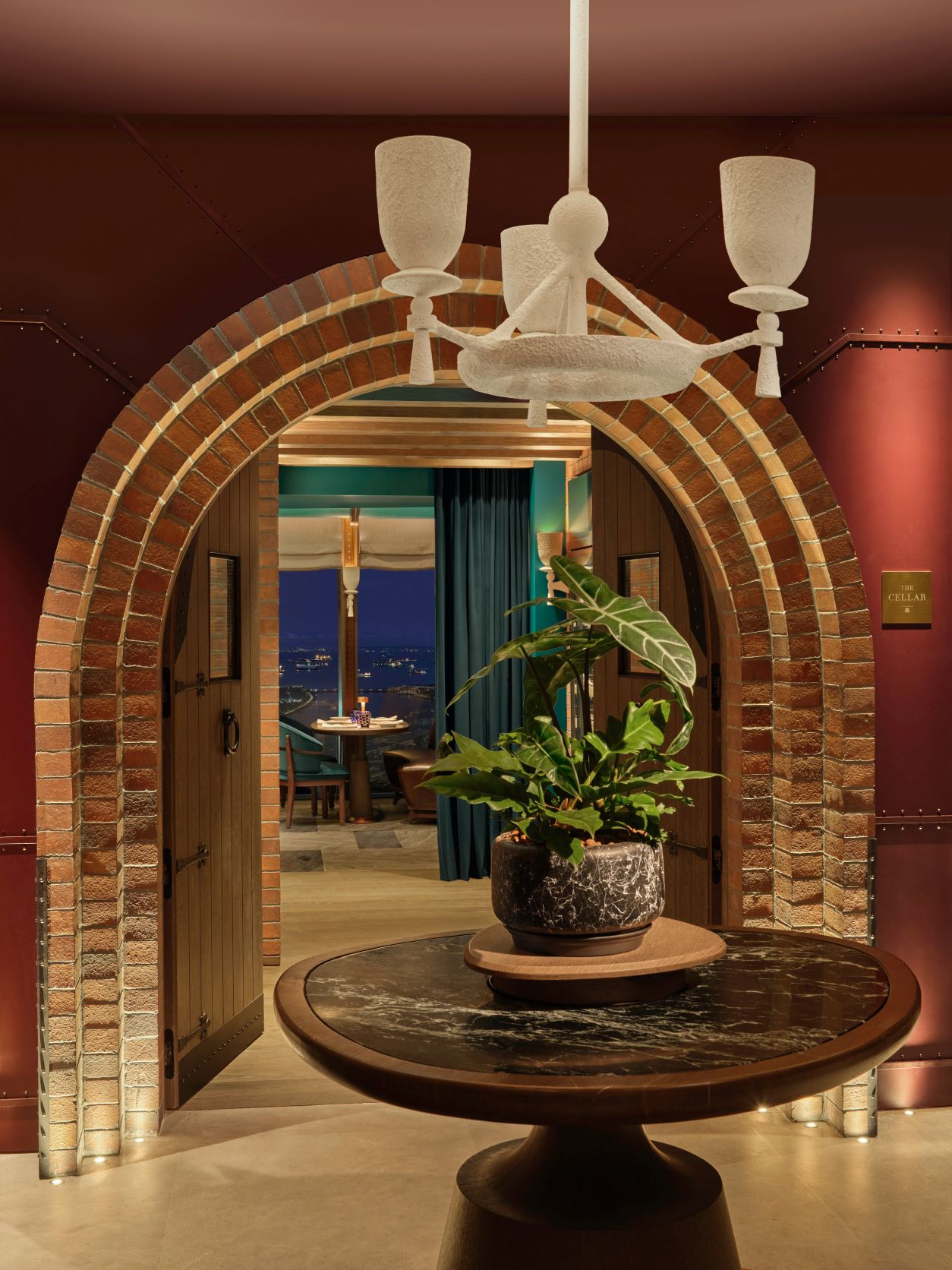
Burgundy-hued and timber-lined, The Cellar’s bijou foyer is anchored by a vaulted ceiling over a smoky mirrored corridor, a round reception table, a cast-white metal pendant lamp, and a tufted Persian-inspired rug that is a whimsical homage to the carpet shops of the hotel’s Kampong Glam neighbourhood.
A triple-layered archway made of distressed brick is framed by black ironmongery, reassuringly solid timber doors, and teal blue velvet curtains that pull back to reveal The Cellar’s intimate dining room speckled with low-slung kidney-bean-shaped sofas and ribbed-back chairs.
Underfoot are rugged cuts of dark Italian Cadia Grigio marble and light castle-grey sandstone, and bookending the space are timber display cabinets sheathed with wire-meshed doors.
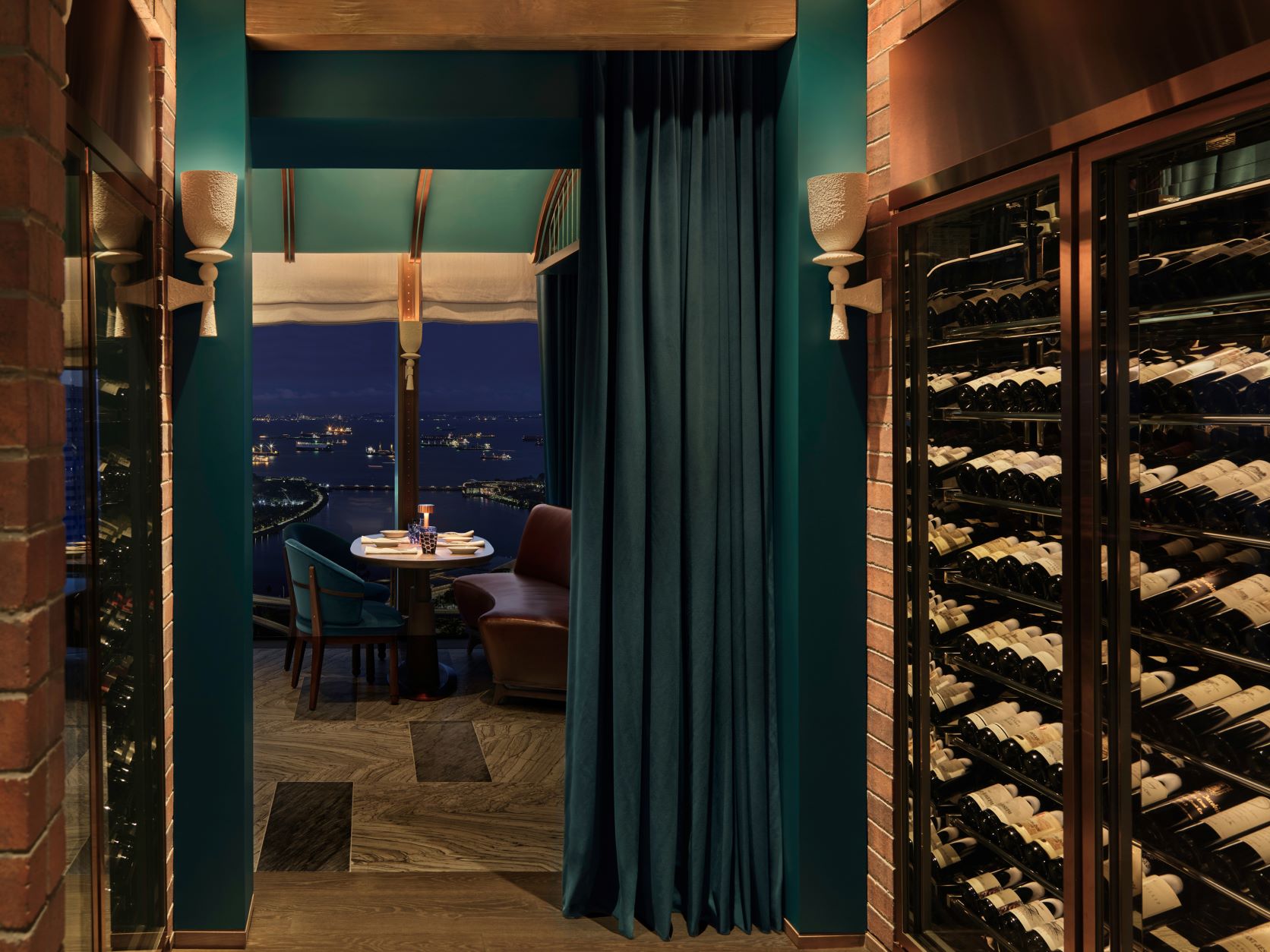
The eye is drawn gently down the length of the room by an arched ceiling in rich hues of deep turquoise embedded with an elegant stretch of oak and copper ribs, whilst copper shelves, framed by industrial rivets and the soft halo of light reflected through display wine bottles, conspire with copper straps, timber mouldings, and a mirrored clerestory to create the palimpsest of a cellar.
“We were careful to not be thematic, but to capture the spirit of the cellar, which is why the ceilings, for example, are not literal interpretations of a vaulted ceiling.”
“Instead, we have the gentle curved linear arch of the oak and copper ribs in the main dining room” says Fu.
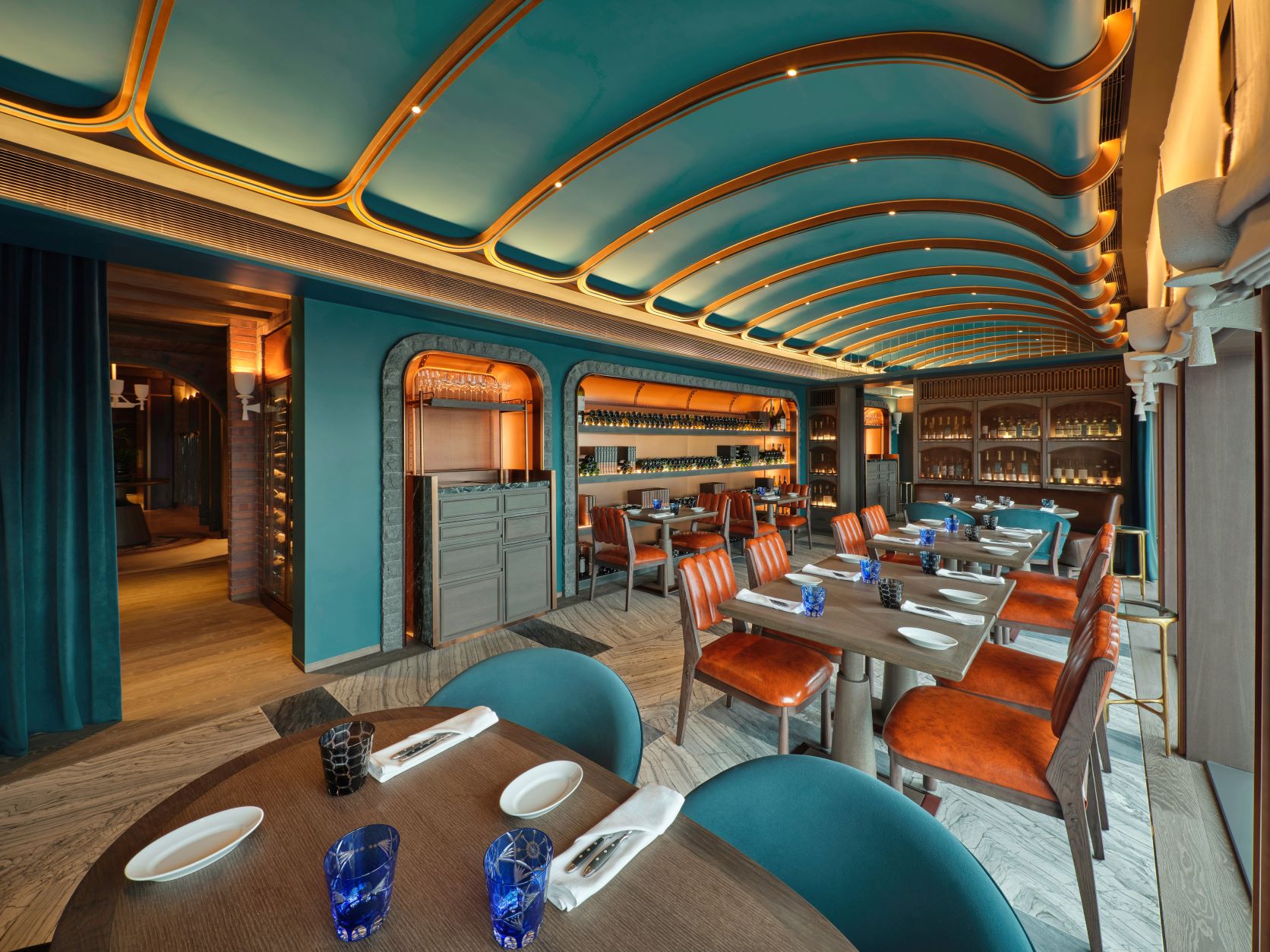
At the far end of the room is the small private dining room, one wall lined by an abstract collage of semi-circled timber insets and mirrors, and the other opening dramatically outwards to an aerial view of IM Pei’s Gateway Towers.
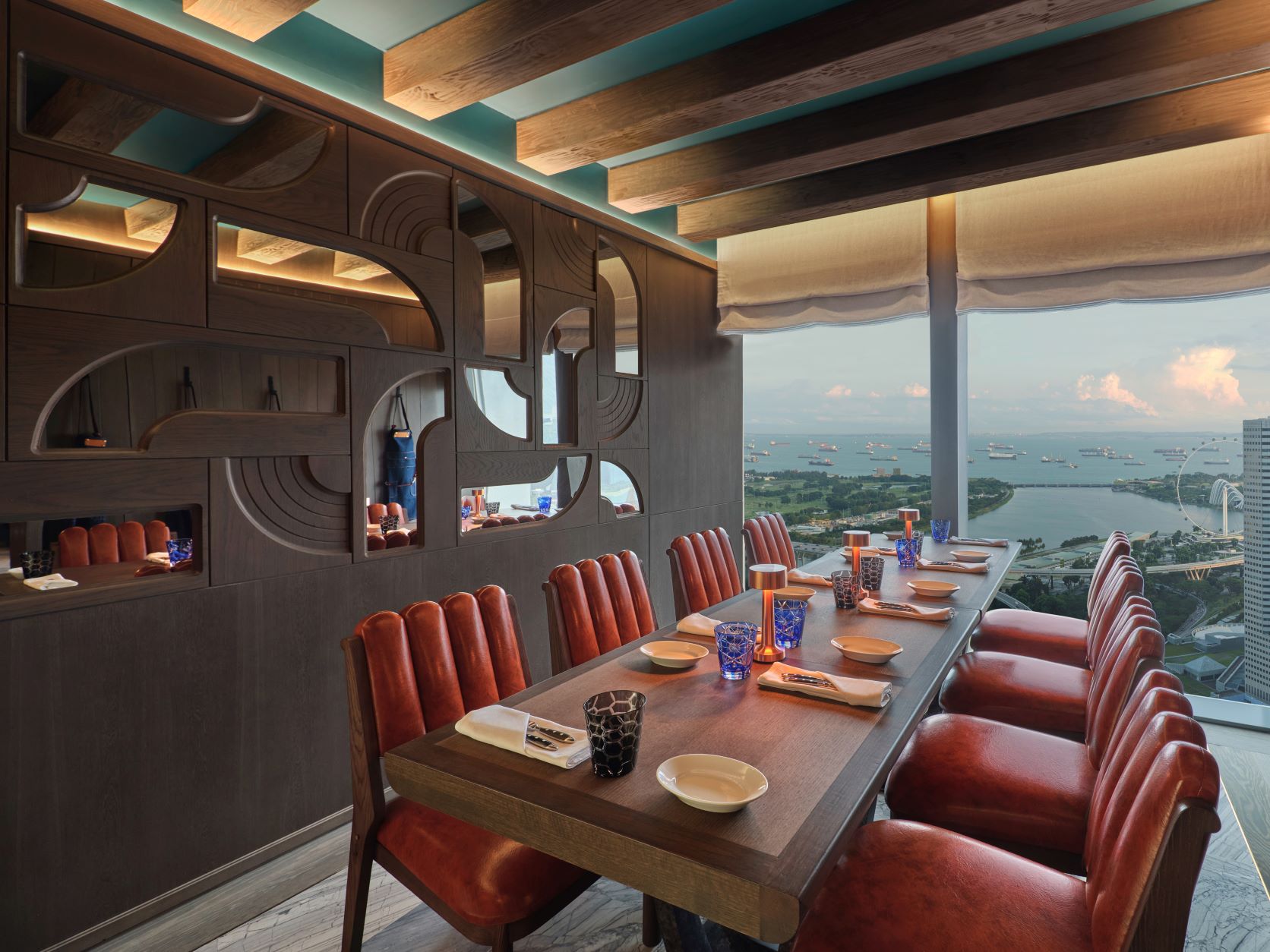
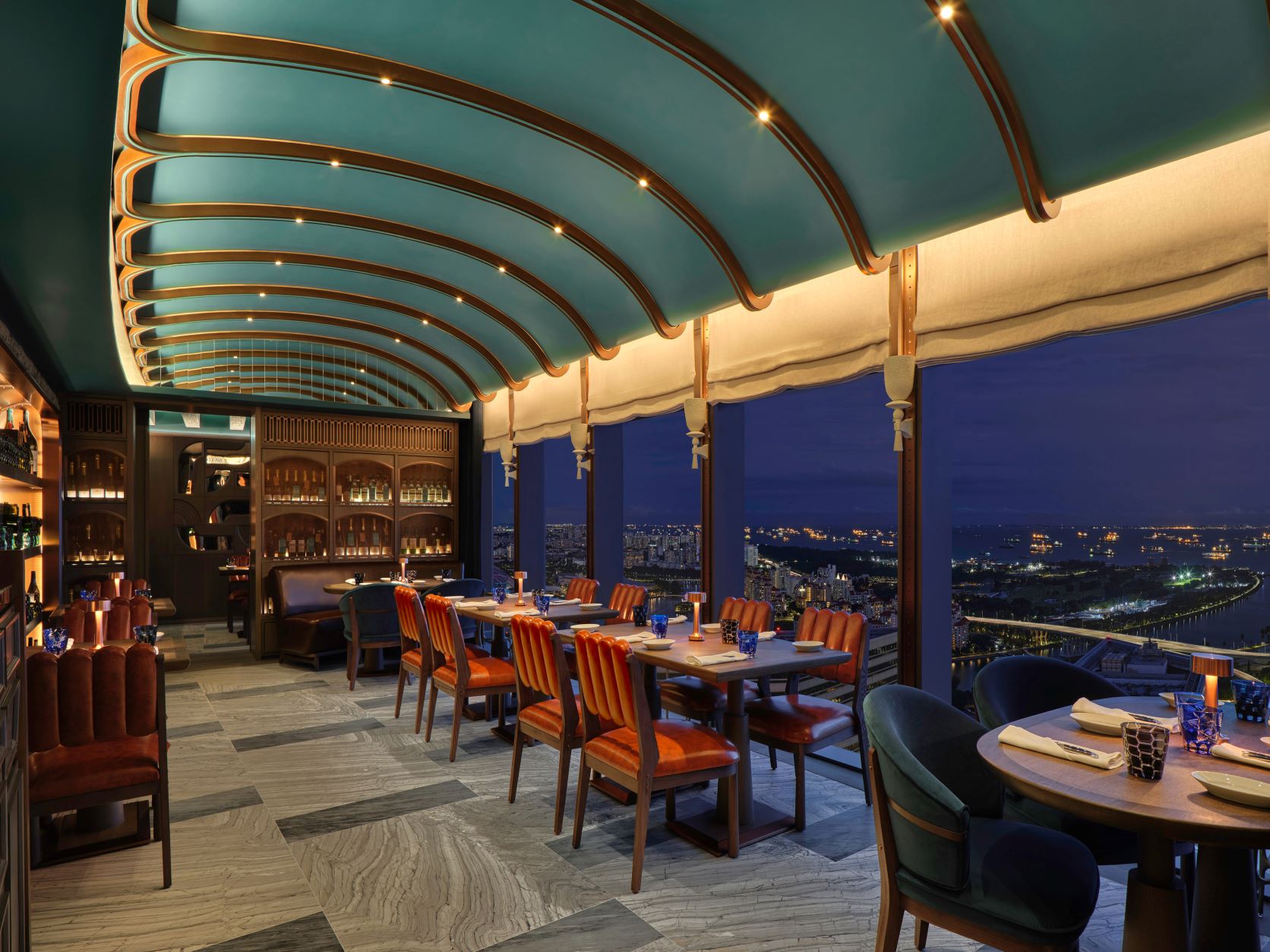
For Fu, The Cellar is an unusual project born out of the need to create more space for an existing restaurant whilst infusing it with a distinct personality that, from a design perspective, also reads holistically.
“With The Cellar, I tapped into my own experience and personal memory of real cellars. That feeling of going into an intimate space with a sense of solidity and tactility in the surfaces and materials. And that is what makes the design a little more intellectual: we’re trying to encapsulate the spirit of a place, but in a way that’s upside down. That is the difficult part, otherwise, the result will appear contrived.”

For Andaz Singapore’s General Manager, Stephan Karl, The Cellar perfectly dovetails with the hotel’s DNA. “Andaz is always about surprises and a touch of whimsy, and André’s design for this addition to 665°F is exactly that.”
“We didn’t want to create something that might be regarded as ‘just’ an extension,” adds Fu. “Rather, it would be more of an addition, an aspirational destination in its own right that, nevertheless, was definitely part of 665°F.”




